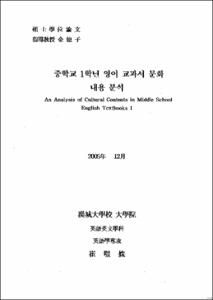중학교 1학년 영어 교과서 문화 내용 분석
- Files in This Item:
-
-
Download
 000000557015.pdf
기타 데이터 / 1.61 MB / Adobe PDF
000000557015.pdf
기타 데이터 / 1.61 MB / Adobe PDF
-
Items in Repository are protected by copyright, with all rights reserved, unless otherwise indicated.
 000000557015.pdf
기타 데이터 / 1.61 MB / Adobe PDF
000000557015.pdf
기타 데이터 / 1.61 MB / Adobe PDFItems in Repository are protected by copyright, with all rights reserved, unless otherwise indicated.